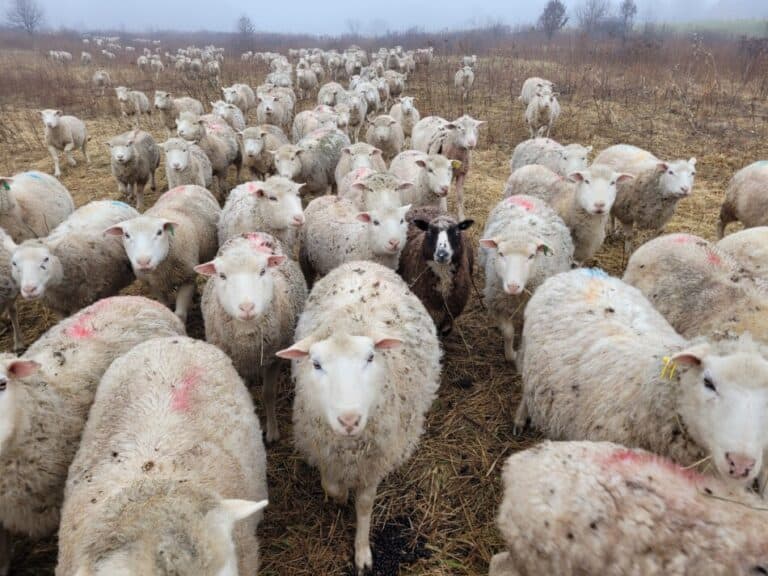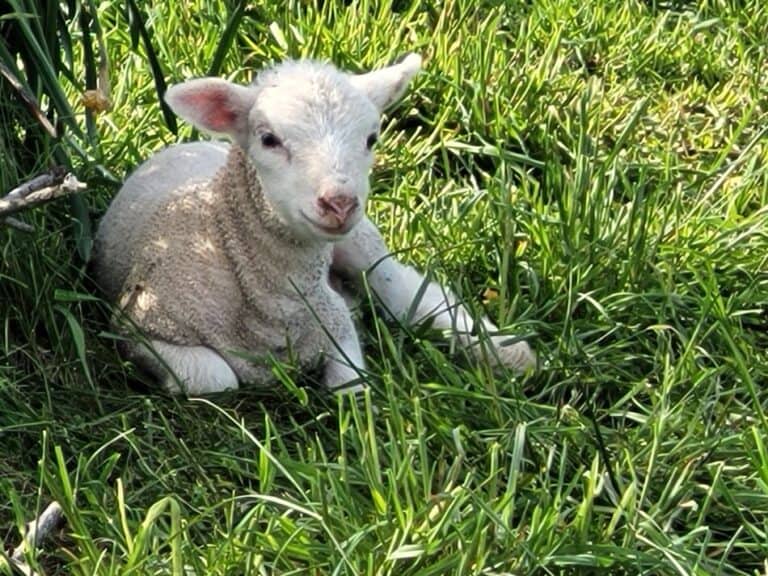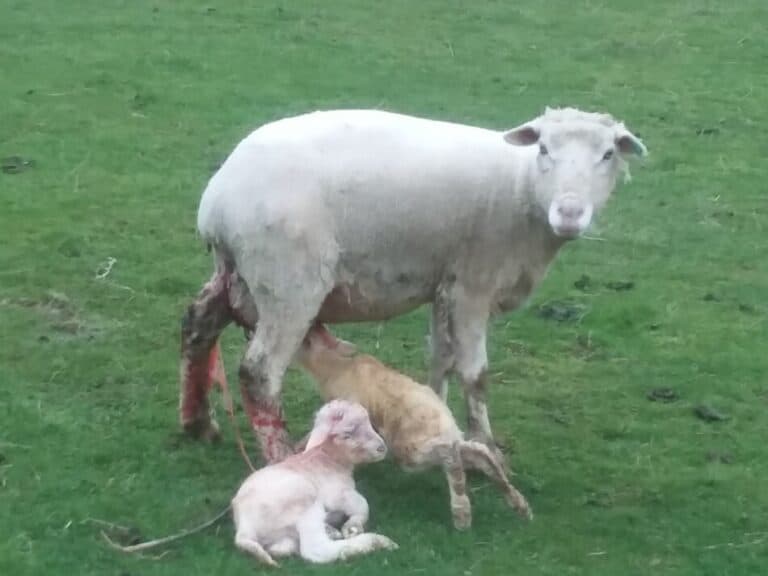What Temperature Is Too Cold For Sheep?
On the colder days of the year, we are all glad to be inside and away from the frosty weather. What about our sheep? How do they handle the cold and when does it get too cold for the flock to be outside?
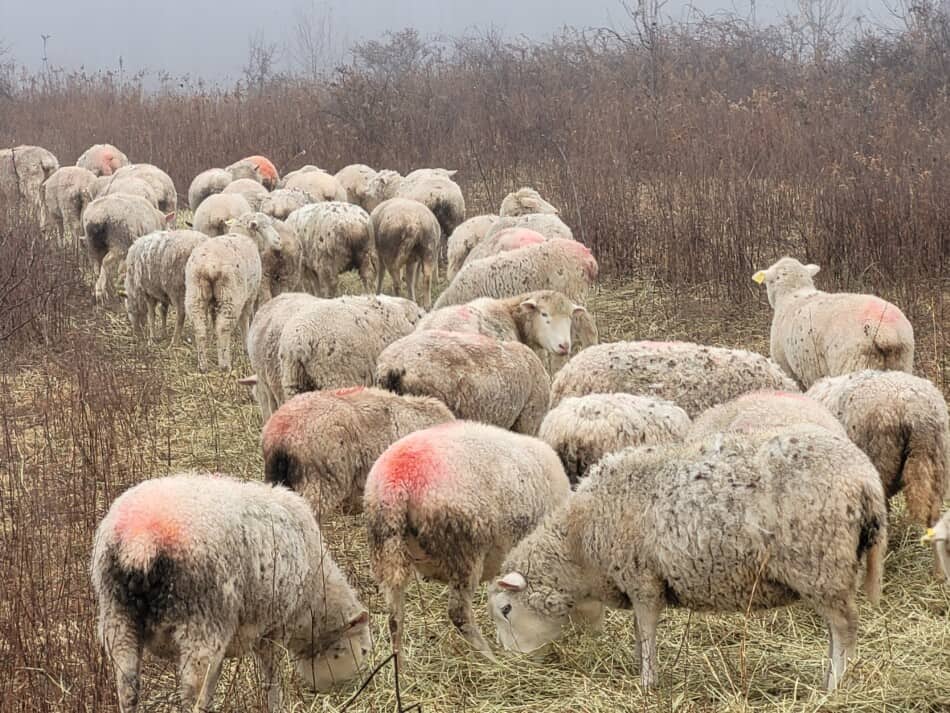
Sheep prefer to be outside in the winter
Sheep actually prefer to be outside in the winter, when they are given the choice. If it was too cold for them to be outside, they would go into the barn instead, but they don’t.
It has been proven by a sheep preference study done in 2018 in Estonia that sheep choose to be outside, rather than inside, in temperatures as low as -20 C.
This study used trail cameras and tracked the movements of the ewes on two farms in Estonia and found that no matter the weather, the majority of the ewes chose to be outside.
Only 27.5% of the observations showed more than 10% of the ewes inside and in 12.5% of the observations there were no ewes inside.
I have to point out that this does not mean that -20 C is the lower limit to sheep being outside, it just means that for this study the lowest the temperature got was -20 and the sheep still went out.
The majority of ewes observed preferred to be outside regardless of the weather conditions during winter in a cool climate, at temperatures as low as −20 °C.
The Effect of Climate Parameters on Sheep Preferences for Outdoors or Indoors at Low Ambient Temperatures
If you are interested, read through the study linked above, which tracked sheep movement 24 hours a day, temperatures, wind and humidity.
We see the same thing with our sheep here in Ohio, where we keep the majority of the flock outside year round. They like to be outside and the ewes seem fine with the colder temperatures.
Even though most of the sheep are out on pasture, there are some sheep inside and some with indoor and outdoor options. The sheep with a choice are normally outside, even in the cold.
The bigger problem we have noticed with our sheep and being cold is not the cold itself, it’s when they are wet and the temperatures are under 55 degrees or so. Then the sheep seem to be less than happy.
The flock rebounds to their normal selves just as soon as the sun comes out again, but as long as they are cold and wet they like to lay low. Being soggy seems to bother them more than being in the cold.
Consider the wildlife in your area, you’ll see that the sheep are similar in preferences to the local deer. If you see deer out and about, that’s a good sign the sheep are going to be okay with the weather, as well.
Do You Need To Lock Sheep Up At Night? is an article I wrote giving the reasons for putting sheep inside mainly for predation concerns, not so much weather, unless you have young lambs with the ewes.
Wet and windy are more of a problem than cold
Strong winds or being wet seems to be more of a problem for the flock than being cold.
From what we see in our ewes, when it’s cold out, the sheep just really don’t care all that much. It’s not a big deal to them. But…add some wind to that or have them be wet, then they are not so happy.
The sheep have the same problem with wind that you do, it makes the temperature seem lower than it really is. The flock can adjust and somewhat fix their situation whenever they choose by moving.
The sheep can move around to a different area in their pasture, for example to the other side of the woods or building, to stand in a place that blocks the wind so they feel more comfortable.
If you look at the study linked above, you’ll notice that even on windy days, the majority of the sheep were still outside. The study specifically states that no matter the weather, 50% were never inside.
True, it was less of the total than normally were outside, but there were still ewes choosing to stand outside rather than be confined.
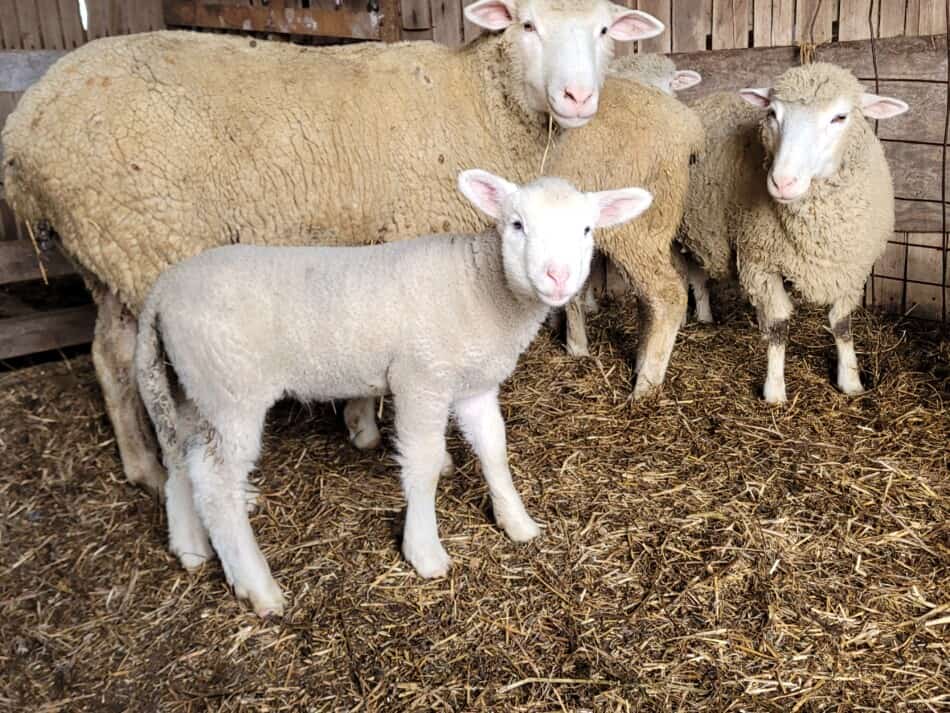
Wool cover matters for sheep comfort
It is important to understand that the cold hardiness of sheep is dependent upon body fat and wool cover, even for hair sheep, since they grow a partial wool coat for winter.
What this means is that if you shear the sheep, you have taken away their ability to handle cold weather, at least temporarily until the wool grows back enough to reinsulate the sheep.
Freshly shorn sheep have little ability to handle cold and would be working off of fat reserves to keep warm in the event of cold weather after shearing.
Sheep with a partially grown out fleece have some cold protection, but it takes the full fleece to give them full protection from the cold, since wool is insulating and the more insulation, the more cold protection.
When To Shear Sheep: Some things to consider is my article going over the best time to schedule shearing as well as the reasons not to shear sheep in certain situations, like heading into winter.
Lambs do not handle cold weather well
Newborn lambs do not handle cold weather well, by this I mean that they need shelter and more care to survive compared to lambs born in warm or dry weather.
I do not have a specific temperature to give you, it’s more about the vigor of the lamb, the mothering of the ewe and the lambing area, rather than a number.
Watch the lambs, if they are progressively getting more active, then are up nursing, things are going well. If they seem to be a bit dopey that lamb is too cold, whatever the external temperature is.
Hypothermia in Lambs is a PDF from Damory Veterinary Clinic in Dorset. This chart clearly shows the appropriate steps to take when working with a chilled newborn, based on the temperature of the lamb.
Cold weather lambing is done inside a barn
Lambs born in cold weather need a well bedded area in the barn where they can be out of the wind and a mom who is on her game and quickly starts licking off the lambs to stimulate them to stand and nurse.
Great mothering is the best defense against cold weather, but even that will not overcome the cold in all situations. This is why you stack the deck in your favor by having the soon to lamb ewes inside.
I need to point out one thing that many folks don’t think about regarding cold weather lambing: it’s still cold in the barn! All the barn does is eliminate the wind and keep the lambs on good bedding.
It’s tempting to think that if you seal up the barn, then it will be warmer inside, true, but you’ll be doing more harm than good since now you’ll restricted ventilation, which can lead to other health problems.
The newborn lamb may also need supplemental heat and a lambing jug (small pen for mom and lambs only) for a few days to get a good start.

Older lambs can handle some cold
Older lambs, once they are weaned, seem to be able to handle the colder weather much better than young lambs, but will still not be able to handle the same level of cold as an adult sheep.
This is for two reasons, first, the lambs, even the older ones, do not have the wool cover that an adult sheep has, so the lambs are less well insulated than a sheep with heavier wool cover.
Once the lambs get to nearly full size, probably 6 months old or so, they’ll be just about as able to handle the cold as the ewes. The younger the lambs are the less cold they can handle without ill effects.
The other challenge for lambs that is commonly overlooked is that they are growing in addition to maintaining, which means they need extra calories to keep up with their metabolic needs.
Adding cold stress also adds the need for more of their daily calories to be used for warmth, rather than growth. This will slow down their growth unless it is compensated for with higher energy feeds.
Lamb Creep Feeder: What is it and why use one is my article written to give you some background on how and why to creep feed lambs, which is one option to increase calories in colder weather.

